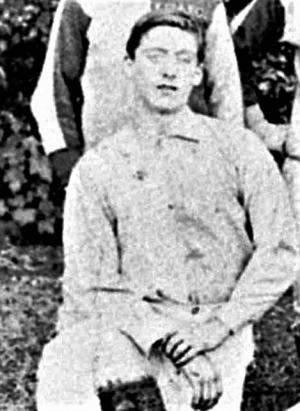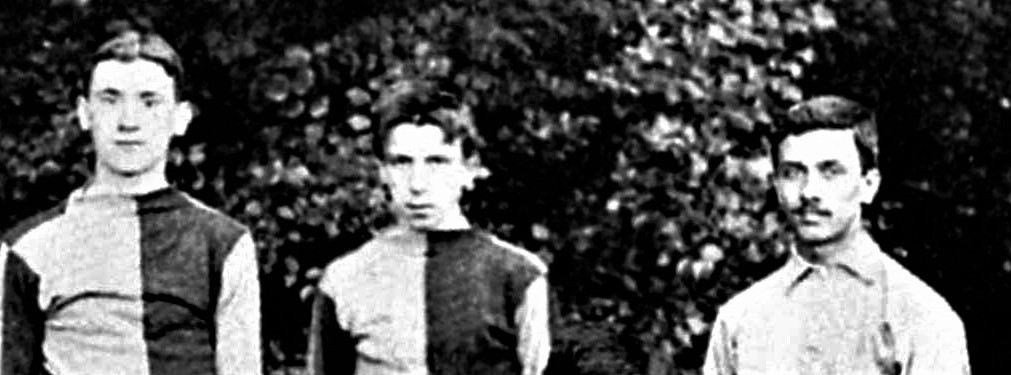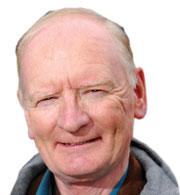The precise date of Fulham FC’s foundation has been the subject of controversy for years.
The earliest primary evidence dates from the 18 August 1883 when St Andrew’s Church in Greyhound Road, Hammermsith, played a cricket match against St Matthew’s Church from Sinclair Road in West Kensington.
In the first innings, St Andrew’s failed to score a single run with the bat (perhaps some of them had never held a bat before) but the cricket and football club, whose first annual dinner is reported in the parish magazine for November 1883, soon evolved into Fulham FC.
The cricketers’ surnames (no initials) were recorded in the local press, which also gave a few football scores from the 1883-84 season.
We had little information on the footballers until Jamie Glynn discovered two complete teams printed in Sporting Life:
- 15 December 1883 - St George’s 0 St Andrew’s 0 (played on Clapham Common)
St Andrew’s: Stone; Smith, Johnson; Sutehall, Douglas; McKay, Howland, Coldman, Hoskins, Norman, Freemayne - 2 February 1884 - St Andrew’s 1 St George’s 0 (played at West Brompton)
St Andrew’s: Norman; Smith, Hoskins; C McKay, Scorey; Johnson, Douglas, T McKay, Coldman, Howland, Freemayne
These were friendly matches of an unsophisticated nature with six attackers and five defenders, one of whom was allowed to handle the ball in his own half. There was no penalty area and no penalty kicks to worry about.

For the December game STONE was in goal. T Stone was a regular member of the football team, probably Thomas Albert Llavallier Stone, born in Peckham on 20 June 1867. After the family moved to Fulham they lived in Kermish Road in St Andrew’s parish. A commercial clerk, Thomas was married in the church in August 1890.
The full-backs were near neighbours. George Charles SMITH, 16, lived in Pownall Road (off Lillie Road) and played cricket and football for St Andrew’s. He was born in Bedford on 14 October 1868. George joined the Metropolitan Police in April 1888 and served until July 1913. He died in 1926.
JOHNSON was Harry Johnson, who became cricket captain in 1884. Born on 1 June 1868, he was a carpenter’s apprentice living in Jervis Road (near George Smith). Harry later became landlord of the Stag’s Head in Tonbridge.
SUTEHALL, the half-back was probably 19-year-old plasterer Henry, the son of Edwin Sutehall, who lived at 99 Lillie Road. Henry got married in 1890 and his son Henry Jr was born in Fulham a year later. The family migrated to the USA, living in Erie, New York, and in 1912 Henry Jr lost his life on the Titanic. Henry’s 16-year-old brother Albert, also a plasterer is another possibility.
The other half-back could be William Allen DOUGLAS, whose father was a gardener at Hurlingham House, quite a distance from St Andrew’s Church and the other footballers.
However, the family did move around Fulham during the 1880s. William was born on 1 July 1868. As a housepainter, he may well have worked with one or more of the St Andrew’s men, who invited him to join the club. In later years he became a lamplighter.
There were four McKAY brothers, all of whom supported the club. They were William, Charles, Fred and Don (but no-one with the initial T). All were born in Central London but their father Donald, a former Grenadier Guardsman, hailed from Wick in Scotland. He moved to Fulham to take advantage of mortgages offered by the Conservative Land Society (this was before secret ballots) and bought a house in Jervis Road (Harry Johnson lived in the same road).
William McKay, the eldest son (born in 1865), favoured a career in retail so was unlikely to have a free Saturday afternoon. Don, a slight 13-year-old, was not quite ready to participate, so it must be Charles (born 1866) who played in both matches. His brother Fred (born 1868), who worked in the Royal Mint joined him for the home game. (Written in cursive a capital T closely resembles a capital F).
Notching a goal each in the 3-0 victory over Surrey Lane on the 29 November 1884 Fred and his brother Charles were two of the earliest St Andrew’s scorers mentioned by name Usually regarded as a good reserve Fred eventually switched to a rival club the Stanley FC where he gained a regular first team place. His best season was 1891-92 after which he reverted to Fulham FC playing his final game in February 1896.
Fred McKay worked at the Royal Mint as a die coiner. He died in Fulham on 27 February 1934.
Jack HOWLAND (born in Liverpool on 21 September 1865) was the captain and probably the most able player of the team. His father John Howland moved from the North in 1878 to run a laundry at Fulham Cross and he served as a sideman at St. Andrew’s Church.
Jack led the club to its first trophy. After breaking his leg in December 1887, he rarely played football again, but his voluntary work for the church went from strength to strength. As well as organising the Sunday school he helped with the weekly family concerts. These free entertainments were open to all and despite the genteel repertoire the audiences could be unruly. Jack proved an excellent bouncer, a skill which may have been useful later when he ran the Lord Palmerston pub in Camden.
He died on 30 November 1909.
COLDMAN may refer to Harry or Frank, the sons of a Fulham Road baker but is more likely to be a misprint for Harry Coleman, born in Paddington on 29 March 1867, the son of a bricklayer. After Harry’s birth the Colemans moved from Lakenheath to Kensington and in August 1883 were living in St Oswald’s Road Fulham. Harry studied building construction at St Marks College Chelsea.
When the club moved to Craven Cottage Harry supervised the volunteers constructing the three dressing rooms and the members’ room and canteen, for which he received life membership of Fulham FC (though he preferred to stand on the terraces). Harry later designed and constructed some fine houses in the roads near the ground. He died in Ealing on 4 April 1934.
HOSKINS played cricket for the club in 1883 and 1884 but his name was sometimes spelled Hoskens or Horken. It was actually Arthur Hosken (born in Haggerston on 26 September1867) or his brother William, two years his senior. School records show that the Hosken family was living in Crown Road (now part of Lillie Road) in April 1883.
William got married in November 1889 and the 1891 census lists his family name as Hoskens, so it was obviously a common spelling mistake. Arthur and William were both paper hangers. They must have been proud of their great grandfather Admiral James Hosken, the first commander of the steamships Great Western and Great Britain.
NORMAN was beyond doubt Thomas Robert Norman. Born in Ipswich on 1 December 1863 he was part of a large family who moved to Fulham and lived at 1a Pownall Road (on what is now the Clem Attlee Estate). In 1868 Tom and two of his sisters were baptized by the Revd John Cardwell, later the Vicar of St Andrew’s. The family was devoted to Cardwell and his mission and church throughout his two decades in Fulham.
As the club’s first secretary Tom ensured its survival in the early difficult years when it had no pitch to call its own. He played regularly up to his wedding in 1891.
After his marriage he abandoned his carpentry trade and moved abroad to manage a hotel in South Africa, returning to England in June 1907 to take over the Swiss Tavern in Peckham. His wife died seven months later and for a time Tom lived with his widowed mother in Fulham, working once more as a carpenter before returning to South Africa. He spent many subsequent years in that country and an associate of Fulham FC historian Alex White has discovered that Tom died there.
That leaves the most unusual name of FREEMAYNE. I suspect it to be a misreading or mishearing of Tremain, who played cricket for St Andrew’s. Thomas and Catherine Tremain brought their family from Cornwall to London, and one of their sons must be the cricketer and footballer. Charles, a carpenter, was born in Cornwall in November 1865, his brother Alfred, a gas fitter, in Paddington on 3 April 1868.
They lived in Field Road within St Andrew’s parish, and Alfred was later married in the church and had his first two children baptized there. After their weddings Charles and Arthur lived in adjoining Fulham houses. By 1939 both families had moved to Barnes.
Charles died in Barnes on 2 April 1945, and Alfred on the 1 April 1954.
Only Smith and ‘Freemayne’ occupied the same position in both matches. The team was sorting itself out and players took turns at goalkeeper. It was not a popular position as a goalmouth scrimmage might well end with everyone piling on top of the keeper.
The replacement half-back in the second match must be Edward Charles SCOREY (pictured above), born in Hampton in 1868 and baptised Edward Scory. His father, a station master, later became a butcher. Edward was a clerk, who played for St Andrew’s over several seasons. Little else is known about him other than that his brother John died in action in the First World War.
Jamie Glynn’s discovery of these two team lists adds to what Alex White and I have Found in our researches. Whilst most of the players came from the building and decorating trades Howland, Charles McKay and Stone had clerical jobs, and George Smith worked in the Post Office before joining the police.
No one in this team appears to have belonged to the retail trade, where a free Saturday afternoon was unlikely. The West Brompton pitch, on which St Andrew’s played their ‘home’ match, must have been the cricket field in Halford Road belonging to a Captain James. St Andrew’s and later Fulham FC occasionally hired it.
The club soon attracted enough members to establish a 2nd XI for cricket and football, and the ‘originals’ had to fight for their senior position. An 1887 photograph of St Andrew’s 2nd XI shows what Coleman, Scorey, Stone and Fred McKay looked like when they proudly wore the club’s colours.
The views expressed in this blog are those of the author and unless specifically stated are not necessarily those of Hammersmith & Fulham Council.
Want to read more news stories like this? Subscribe to our weekly e-news bulletin.

